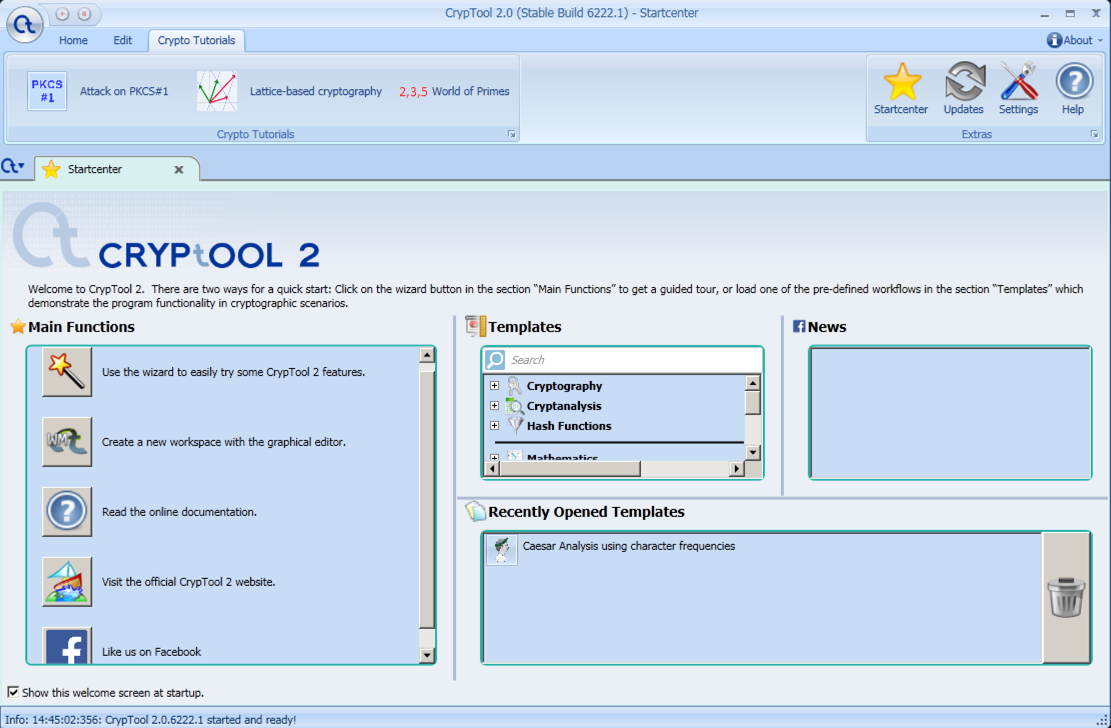
https://www.cryptool.org/en/ct2/downloads
Run the installer file. Install the software with the default options.
Double-click the CrypTool 2.1 icon on your desktop to launch CrypTool.
On the left side, in the "Main Functions" section, click the Wand icon labelled "Use the wizard...".

In the "TASK SELECTION" screen, on the left side, click Cryptanalysis, as shown below.
Then click Next.
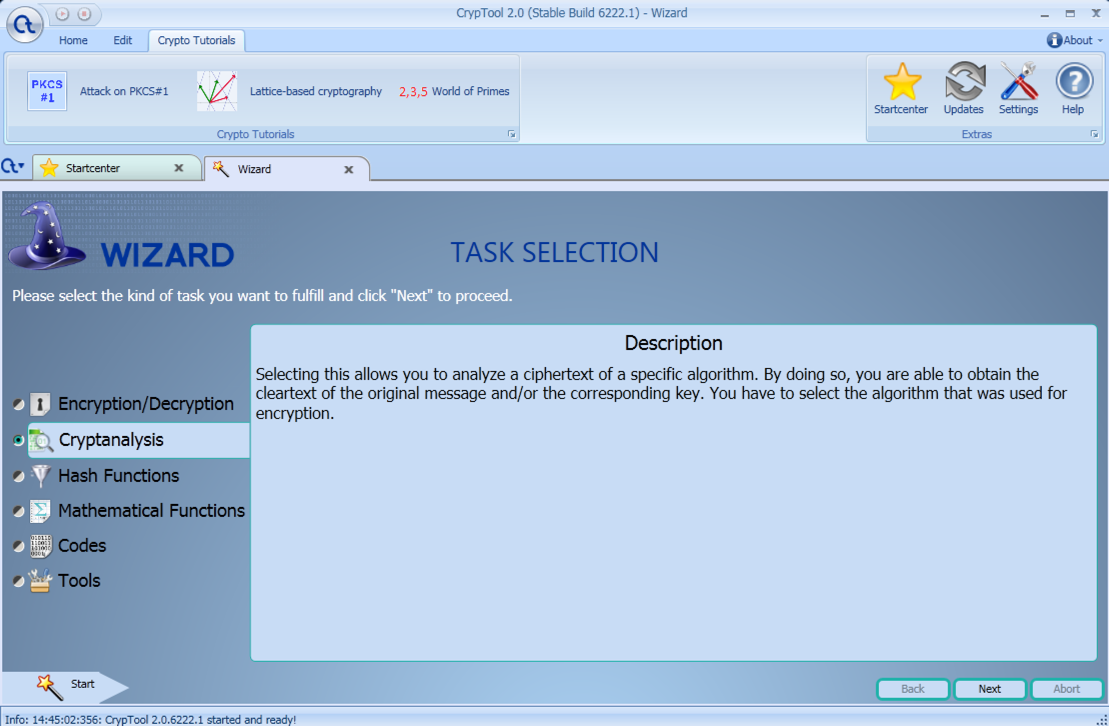
In the "AGE SELECTION" screen, accept the default selection of "Classic Encryption" and click Next.
In the "ALGORITHM SELECTION" screen, accept the default selection of Caesar and click Next.
In the "CAESAR ANALYSIS" screen, some example Ciphertext appears, as shown below.
Leave the "Language" set to German and click Next.
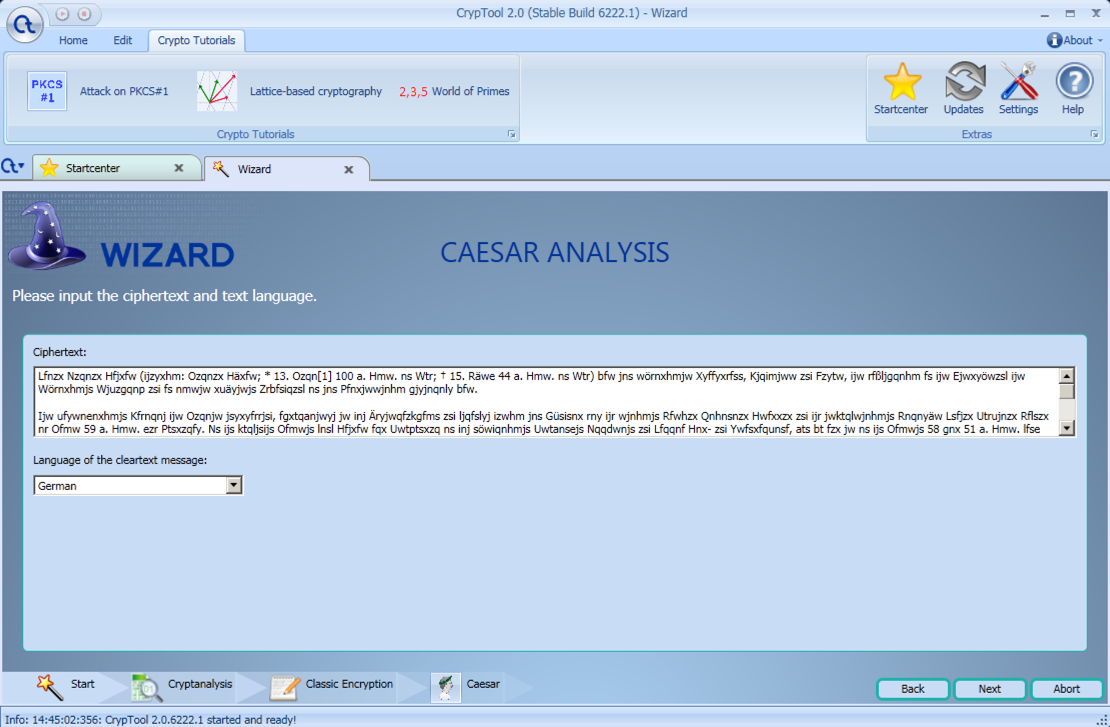
The next screen shows the "Deciphered Ciphertext" in the lower left pane, and the Key of 5 in the lower right pane, as shown below.
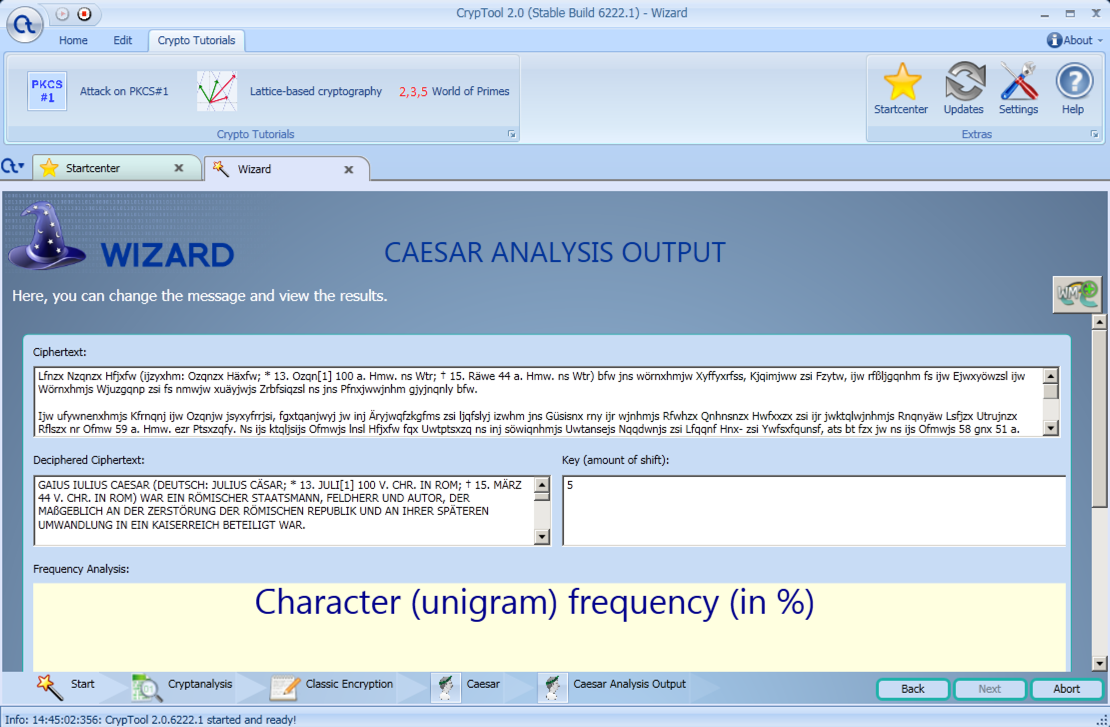
To understand how this was done, scroll down to see the "Character (unigram) frequency", as shown below.
Frequency analysis works because some letters are far more common than others. As you can see, J is the most common letter in the ciphertext, followed by S.
In German, the most common letter is E, followed by N.
E shifted forward by 5 letters is J
N shifted forward by 5 letters is S
The Caesar shift is easily found by adjusting the key until the observed frequency of letters most closely matches the average usage of letters in the target language.
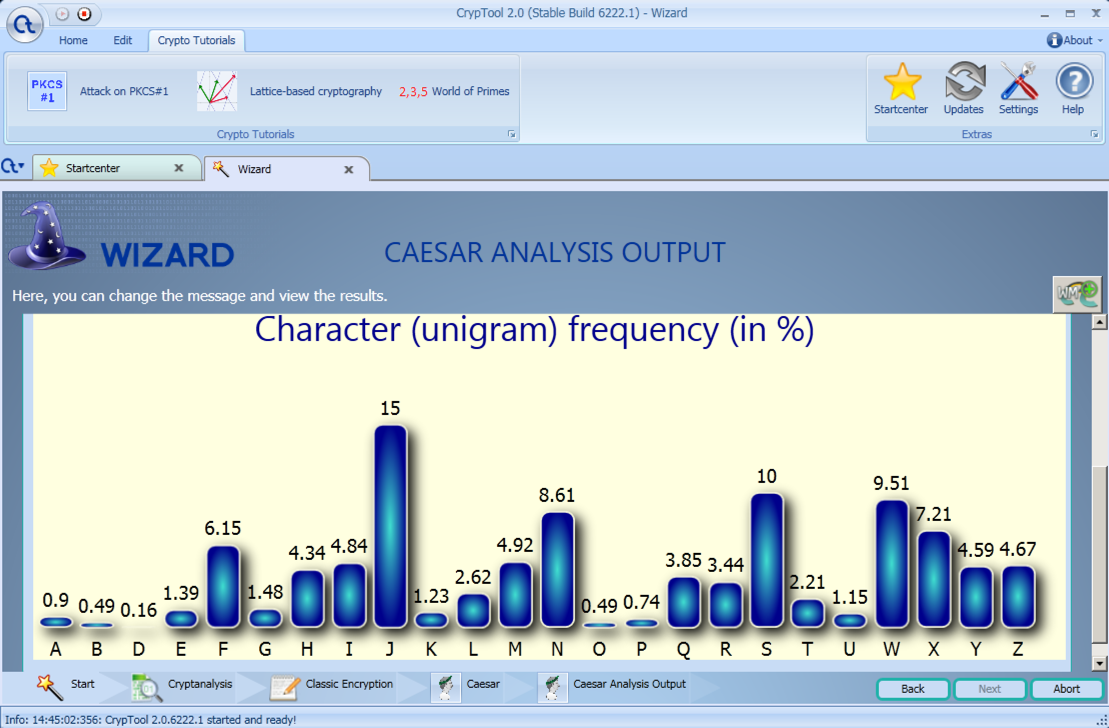
"ITQZ YQJUOA EQZPE UFE BQABXQ, FTQK'DQ ZAF EQZPUZS FTQ NQEF. FTQK'DQ ZAF EQZPUZS KAG, FTQK'DQ EQZPUZS BQABXQ FTMF TMHQ XAFE AR BDANXQYE MZP FTQK'DQ NDUZSUZS FTAEQ BDANXQYE IUFT GE. FTQK'DQ NDUZSUZS PDGSE. FTQK'DQ NDUZS ODUYQ. FTQK'DQ DMBUEFE... MZP EAYQ, U MEEGYQ, MDQ SAAP BQABXQ." -- PAZMXP FDGYB
ESP BFTNV MCZHY QZI UFXAD ZGPC ESP WLKJ OZR.
The flag is The complete decrypted sentence.
Hint
The text is so short that automated frequency analysis fails. Examine the "Character (unigram) frequency" chart to choose likely shift values, and then test them one-by-one using the "Encryption" task instead of the "Cryptanalysis" section.
AXLT VN KJKH, AXLT VN JUU WRPQC UXWP
The flag is the complete decrypted text.
Hint
Frequency analysis is essentially worthless, because the text is short and uses an unusual pattern of words.You can just try keys one by one in CrypTool till you find the key: there are only 25 possible keys. This problem is easier to solve with a custom Python program than with CrypTool.
Posted 5-13-16 by Sam Bowne
Modified 5-29-17
http links to my server upgraded to https 9-1-17
Updated to stable Cryptool 9-14-17
Added to Crypto Hero 4-15-18 8 pm
More instructions for unzipping CrypTool added 3-5-19
Updated for new scoring system 7-6-19
Download link updated 9-3-2020
Source link updated 9-7-2020 (ty Mr. Kocher)
CrypTool link updated 9-1-2021
Color updated 6-19-24
Video added 3-26-25